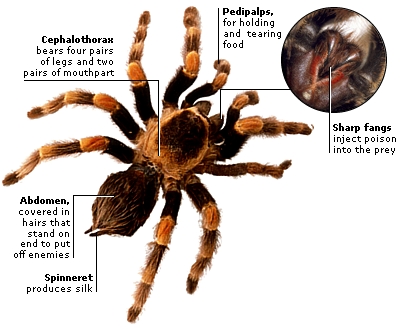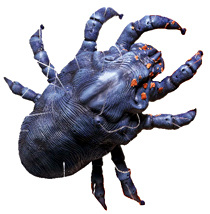Spiders, scorpions, ticks, and mites have two body parts and four pairs of legs. They breathe using lung books (that look like an open book) in the abdomen. The front part of the body, known as the cephalothorax, bears the legs and two pairs of mouthparts: the chelicerae, which are like either pincers or fangs, and the pedipalps, which look like either legs or claws. Most arachnids live on land, but some live in water.

The red-kneed tarantula pounces on prey that comes close to its lair. Like most types of spider, the tarantula paralyses and kills its prey with venom, which it injects using fangs. The venom also breaks down the prey’s flesh, so that the spider can suck it up as a liquid. Spiders are carnivorous, eating mainly insects.
CLASS: ARACHNIDA
Order: Scorpionida
Features: predators, sting-bearing tails, large, claw-like pedipalps, bear live young
Order: Acarina
Features: body not distinctively segmented, many are pests and parasites

Order: Araneae
Features: mostly eight-eyed, able to produce silk


+copy.jpg)




0 comments:
Post a Comment